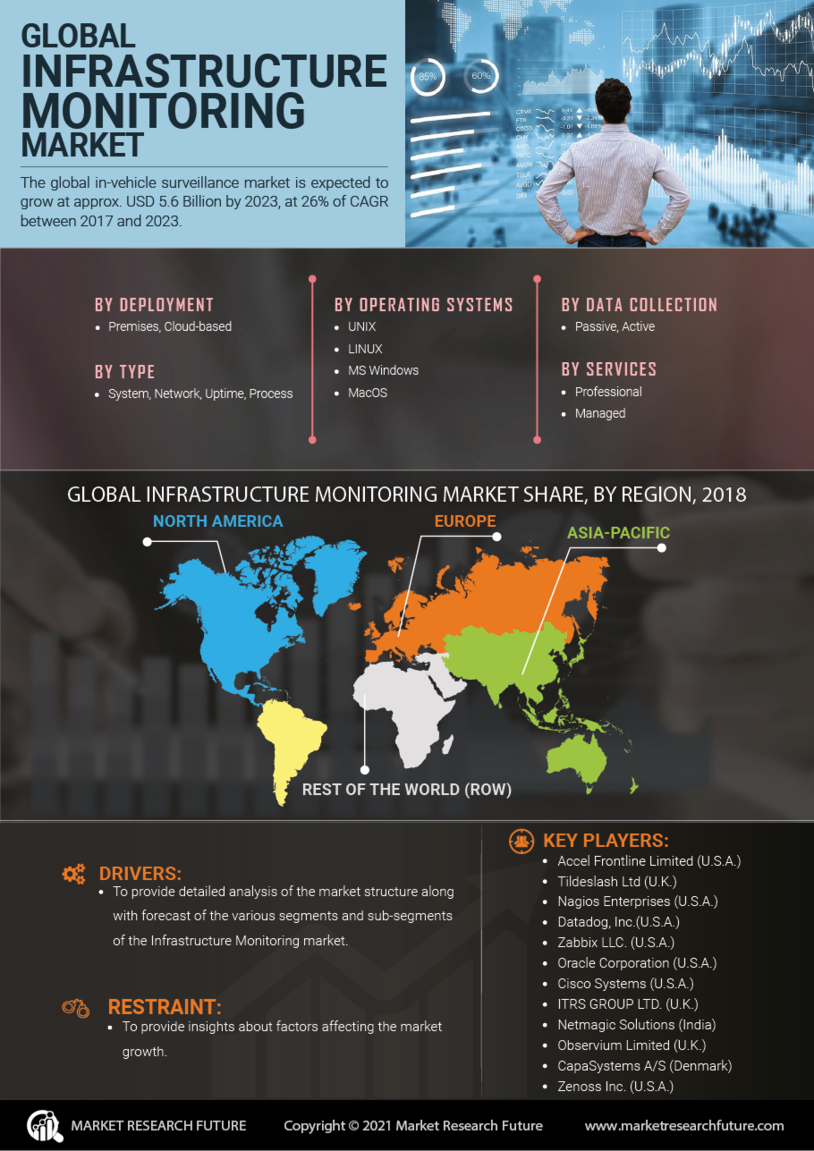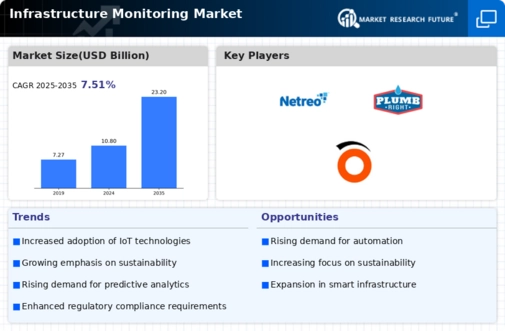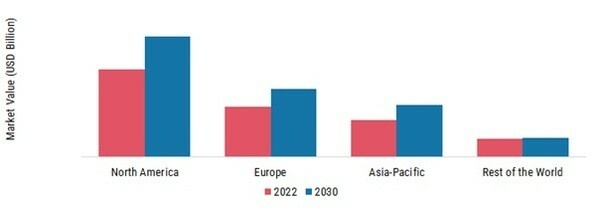Market Growth Projections
The Global Infrastructure Monitoring Market Industry is poised for substantial growth, with projections indicating an increase from 10.8 USD Billion in 2024 to 23.2 USD Billion by 2035. This growth trajectory reflects a compound annual growth rate (CAGR) of 7.21% from 2025 to 2035. The market's expansion is driven by various factors, including rising infrastructure investments, technological advancements, and increasing regulatory compliance. As stakeholders recognize the importance of effective monitoring solutions for maintaining infrastructure integrity, the demand for innovative technologies is expected to rise, further propelling market growth.
Technological Advancements
Technological innovations play a pivotal role in the expansion of the Global Infrastructure Monitoring Market Industry. The integration of IoT, AI, and big data analytics into monitoring systems enhances the ability to predict failures and optimize maintenance schedules. These advancements not only improve operational efficiency but also reduce costs associated with infrastructure management. For example, smart sensors can provide real-time data on structural integrity, allowing for timely interventions. As these technologies evolve, they are likely to attract further investments, contributing to the anticipated market growth from 10.8 USD Billion in 2024 to 23.2 USD Billion by 2035.
Rising Infrastructure Investments
The Global Infrastructure Monitoring Market Industry is experiencing a surge in investments as governments and private entities prioritize infrastructure development. In 2024, the market is projected to reach 10.8 USD Billion, driven by the need for enhanced monitoring solutions to ensure safety and efficiency. Countries are increasingly allocating budgets for infrastructure projects, which include roads, bridges, and utilities. For instance, the United States has committed substantial funding to modernize its aging infrastructure, thereby creating a demand for advanced monitoring technologies. This trend indicates a robust growth trajectory for the market as investments continue to rise.
Urbanization and Population Growth
Rapid urbanization and population growth are key drivers of the Global Infrastructure Monitoring Market Industry. As cities expand and populations increase, the demand for reliable infrastructure becomes paramount. This growth necessitates the implementation of effective monitoring systems to manage the strain on existing infrastructure. For example, in developing nations, urban centers are witnessing unprecedented growth, leading to the need for enhanced monitoring of transportation systems and utilities. The market is projected to grow at a CAGR of 7.21% from 2025 to 2035, reflecting the urgency to address infrastructure challenges posed by urbanization.
Environmental Concerns and Sustainability
Environmental concerns are increasingly shaping the Global Infrastructure Monitoring Market Industry. As climate change poses risks to infrastructure resilience, there is a growing emphasis on sustainable practices and monitoring solutions. Governments and organizations are investing in technologies that not only monitor structural health but also assess environmental impact. For instance, monitoring systems that track the effects of weather patterns on infrastructure can help mitigate risks. This focus on sustainability is likely to drive market growth, as stakeholders seek solutions that align with environmental goals while ensuring infrastructure integrity.
Regulatory Compliance and Safety Standards
The Global Infrastructure Monitoring Market Industry is significantly influenced by stringent regulatory compliance and safety standards. Governments worldwide are enforcing regulations that mandate regular monitoring of critical infrastructure to prevent disasters and ensure public safety. This regulatory landscape compels organizations to adopt advanced monitoring solutions to comply with legal requirements. For instance, the European Union has established guidelines for the monitoring of bridges and tunnels, thereby driving demand for sophisticated monitoring technologies. As compliance becomes increasingly critical, the market is expected to grow steadily, reflecting the importance of safety in infrastructure management.


 Source: Secondary Research, Primary Research, MRFR Database, and Analyst Review
Source: Secondary Research, Primary Research, MRFR Database, and Analyst Review

